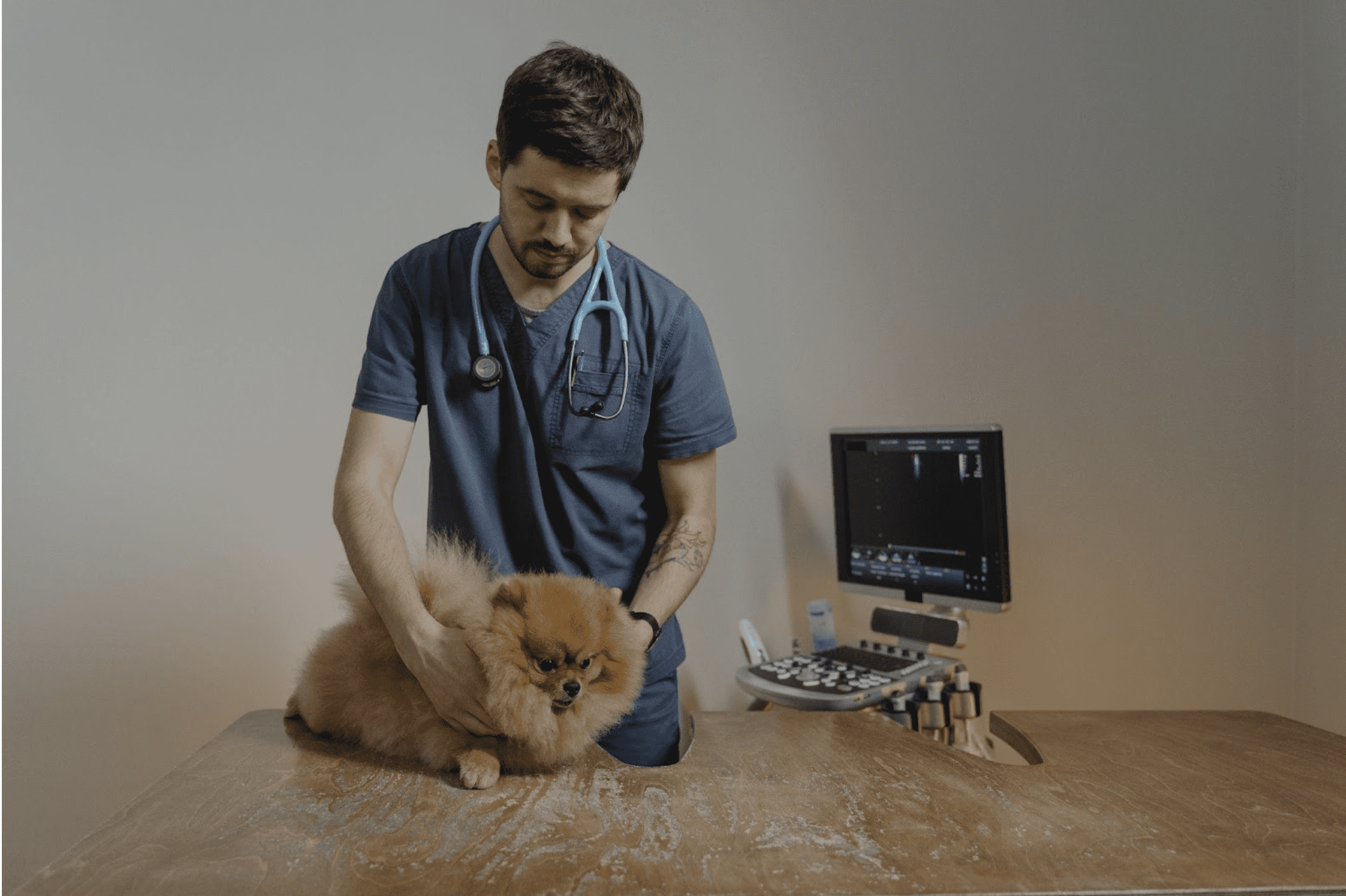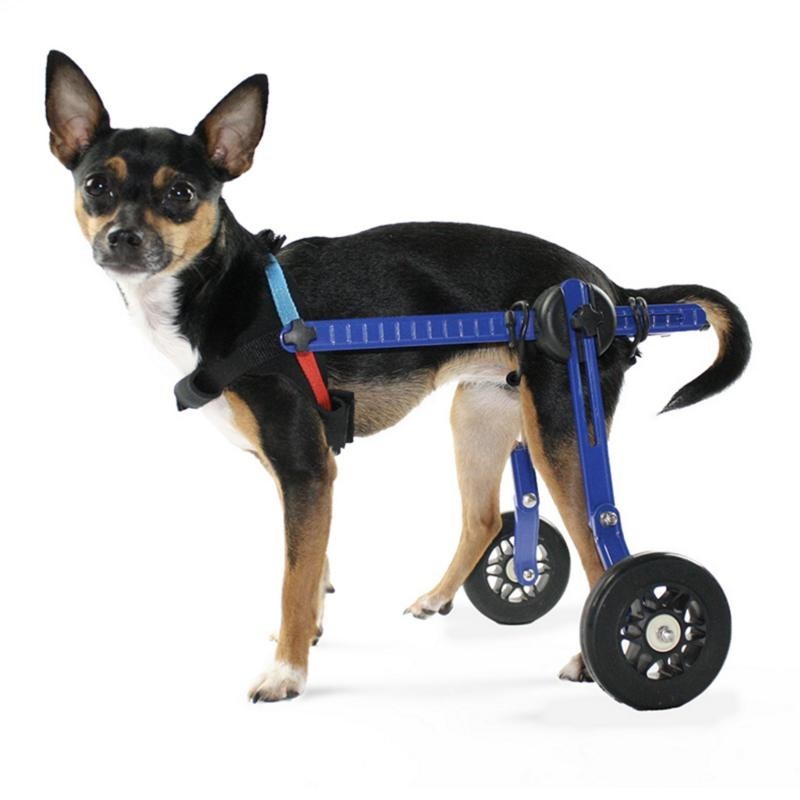How To Help Dogs with Mobility Problems
In this post, we are going to look at how to help dogs with mobility problems improve their quality of life and aid in recovery.
It can be distressing to see your lovely dog struggle to get their paws up for a simple walk or jump.
Mobility problems in dogs will certainly affect your dog’s quality of life and it is, therefore, important to know the steps you can take to help them out.
According to Johnston, S.A., it has been estimated that close to 20% of dogs in the USA will experience some joint problems in their lifetime which will affect their mobility.
Keep reading to discover the causes of mobility problems in dogs and what you can do to help your dog if they’re affected by these conditions.
Causes Of Mobility Problems in Dogs
Mobility issues will compromise the dog’s quality of life by making it difficult for them to perform simple tasks like walking, running, jumping, or going up/down the stairs as they used to.
Mobility restriction in dogs can result from several conditions that affect the dog’s ability to walk normally.
It is more prevalent in elderly dogs but younger ones too can acquire this health issue.
The following are some of the agents that might predispose your furry friend to difficulty in movement:
- Birth defects
- Physical injuries
- Neurological conditions
- Degenerative diseases such as arthritis, cancer, intervertebral disc disease, etc.
- Aging
These conditions are sometimes painful for dogs to bear and they might show the pain in form of yelping when trying to get up and walk.
Signs And Symptoms of Mobility Problems in Dogs
The signs and symptoms of dogs with mobility issues may vary depending on how severe the situation is. The following list outlines the general signs that you should watch out for;
- Limping
- Favoring one limp when walking
- Hesitant to take the stairs
- Unwilling to jump and climb
- Decreased physical activities
- Unwillingness to play
- Intolerance to exercising
- Swelling on the joints
- Yelping when touched on the joints
- Difficulty in getting up
If you notice any of the above symptoms, it is important that you pay attention and seek ways of helping your dog in good time.
How To Help Dogs with Mobility Problems
Consultation With Your Vet
Your first stop should be at your vet’s office for consultation and diagnosis. Come along with your affected dog and let the vet carry out diagnostic tests to determine what ails your canine friend.
Photo Credits: Tima Miroshnichenko
Diagnostic Process for Mobility Problems in Dogs
Your vet will most likely start with a physical examination to pin down the exact place with inflammation and pain.
They will then proceed with the blood work such as complete blood count (CBC), urinalysis, fecal analysis, and biochemistry profile to establish the presence of any infection causing the mobility issues.
The vet will proceed to use radiographs such as X-rays to visualize your dog’s aching joints and look out for any abnormalities.
This can be useful to pinpoint physical trauma and injuries that may have been sustained by your dog or damaged bones caused by arthritis.
If the affected dog is suspected to have arthritis or other joint diseases, then the vet will proceed to carry out a synovial fluid analysis for further guidance and action.
The neurological functionality of the dog can also be put to the test to determine if the mobility problem is caused by a neural disease.
Cerebrospinal fluid analysis or magnetic resonance imaging (MRI) scans can be used to diagnose if the affected dog is suffering from a spinal cord disease.
Treatment
Once your vet narrows down to a particular cause for your dog’s mobility issues, then they may prescribe an appropriate treatment which can include:
1. Drug prescription
Your vet can recommend some pain-relieving medication and anti-inflammatory drugs to help cut down your dog’s joint pains.
The type of drugs needed by your dog will largely depend on their condition and other underlying issues classified by the vet.
Non-Steroidal Anti-Inflammatory Drugs (NSAID’s) are commonly used to alleviate pain in mobility-restricted dogs.
The common ones recommended by vets include; Galliprant, Metacam, Deramax, and Carprofen (Rimadyl & Novox).
Caution! You should not administer any drugs to your dog without a prescription from a qualified vet.
Doing so might predispose your pup to various complications that could have otherwise been avoided. Also, remember to keep human medications away from your dog.
2. Physical therapy
Light exercises and a gentle massage on the affected limb may help to relieve your dog’s pain. Physical therapy also helps in strengthening your dog’s muscles hence they can have the strength to make a few more steps.
3. Surgical treatment
In severe cases, your vet may recommend a surgical procedure to be performed on your dog as an effective treatment option. This may involve the repair or replacement of the affected joints or tissues.
Surgical treatment may either be a joint or spinal injury depending on your dog’s affected area.
You should always follow the recommended treatment plan as prescribed by your vet. Some dogs might require simple remedies to heal while others will need a comprehensive approach to deal with the underlying issue.
Most vets will always recommend a mixed approach in treating mobility issues in dogs for the best possible results.
This will involve both the vet’s treatment procedures and your own home care provision at home. Don’t forget to make regular follow-up appointments with your vet to discuss how things are faring.
At-Home Care Solutions
You should not leave it to your vet alone to treat your dog inflicted with mobility issues. There should always be a combined approach that seeks to make the recovery process faster and better.
At-home solutions are the simple things that you can do at your home to aid your dog’s journey to recovery.
Life should not run as normal for your sick dog; you have to adjust a few things to aid their movement and strengthen their muscles for their benefit.
1. Sleep support
A dog with physical pain causing mobility restrictions should not have to put up with a normal bed for rest and sleep.
Hard surfaces can worsen the symptoms such as inflammation, aches, joint pains, and soreness.
You should instead search for a comfortable and supportive orthopedic dog bed for their joint support when resting and sleeping.
These therapeutic beds are crafted with a special form and cushion that relieves your dog’s joints from existing pain and prevents them from acquiring other joint problems as they sleep.
2. Feeding support
A dog with mobility issues might not have the strength to strain their necks downwards for their food and water.
You can consider supporting their meal intake by getting an elevated food bowl which allows them to eat with a stress-free posture.
3. Movement support
What better way to relieve an arthritic dog other than supporting them as they move? This might involve using a full support harness for dogs to take away the dog’s weight strain from their limbs as they walk.
With such a tool, you can lift your affected dog when getting up, walking, climbing, and moving around in a stress-free manner.
These harnesses are especially good for dogs with arthritis, hip dysplasia, and general body weakness.
4. Balanced diet
A healthy and balanced diet is good for dogs in keeping fit and preventing obesity which can take a toll on their joints.
Too much weight adds excessive strain on the dog’s joints and this might cause early mobility challenges.
Such a diet should contain appropriate servings of all the naturally sourced nutrients and major minerals in the recommended portions throughout the day.
It is good to avoid high-calorie, high-sugar, & processed foods since they may add more weight and additional health issues to your dog.
5. Hip and joint supplements
You can supplement your dog’s diet by giving them the right joint supplements to support the growth and repair of the cartilage.
Such supplements should have Glucosamine, Chondroitin, Omega-3 fatty acids, and Methylsulfonylmethane (MSM) as the majorly composed ingredients.
6. Physical therapy exercises
A dog with mobility issues will certainly not be willing to take up exercises as they used to. But you should include some light exercises and physical therapy sessions to help out a dog with aching joints.
This will help to strengthen their muscles, reduce the pain and increase their willingness to stand and take up a few more steps.
Some of the physical therapy options that you can use are:
- Gentle walks with a full harness support
- Hydrotherapy
- Range of motion (ROM) exercises
- Gentle massage on the leg muscles.
- Heads up
- Toe squeeze
- Sitting and standing
- Light exercises
Mobility Aids for Dog
If your dog’s mobility concerns are becoming severe, then you can opt for some assistive devices that will help to keep them active.
Conditions such as Intervertebral Disc Disease (IVVD), neurological, and arthritis among others have been known to cause severe mobility issues in dogs.
But with such devices, you can be sure to relieve some strain from your dog’s joints and help them get active once again.
1. Dog Wheelchair
These devices can be used to support dogs whose hind legs have become immobile and need support to bear the weight. They are also good for pups with degenerative disc disorders and paralyzed ones.
A doggie wheelchair (also known as a dog cart) will help to bear the dog’s weight and restore their ability to walk, run, play, and even exercise once again.
2. Canine scooter
A doggie scooter is a perfect solution for immobile dogs to use while indoors. It can be a good replacement for the wheelchair, suitable for smoother surfaces.
The scooter can glide on any floor surface giving your ailing dog an active lifestyle despite their problems with the joints and limbs.
3. Back and Hip Brace
Spinal trauma can cause severe back and hip pain in dogs making it difficult for them to walk. A canine hip brace for hip support provides the necessary support through compression to lessen the dog’s hip pain.
It helps to keep your dog active despite their immobile condition and it is good for those suffering from hip dysplasia.
Remember to always work with a qualified vet or a specialist in dog mobility devices to work out which tool will suit your dog’s recovery journey.
Using the wrong mobility device, or doing so incorrectly, can put your sick dog in more danger than good, so it is better to be sure of what you’re going for.
Helping Your Dog to Cope with Mobility Problems
You should always help your lovely pup to cope with mobility issues at all times. Remember that the affected dog will rely on you for their movement and treatment procedure to help improve their quality of life.
One of the first things you need to do is provide mental and emotional support to the affected dog. Pass down your affection for them by being there in times of need and don’t leave them in situations that might throw them into anxiety.
Additionally, you should know your dog’s weak points and provide the necessary activities that will help to improve their movement during this recuperation period.
To Conclude
The key takeaway to help dogs with mobility problems is to seek immediate veterinary care and provide adequate home-grown solutions in concurrence.
If your dog’s case is severe, you should not hesitate to look for an assistive mobility device to lessen the burden of walking for your dog.
Once you provide the right treatment, care, and emotional support, you can greatly help your ailing dog to live a good life as they strive to regain their full mobility.








Leave a Reply
Want to join the discussion?Feel free to contribute!